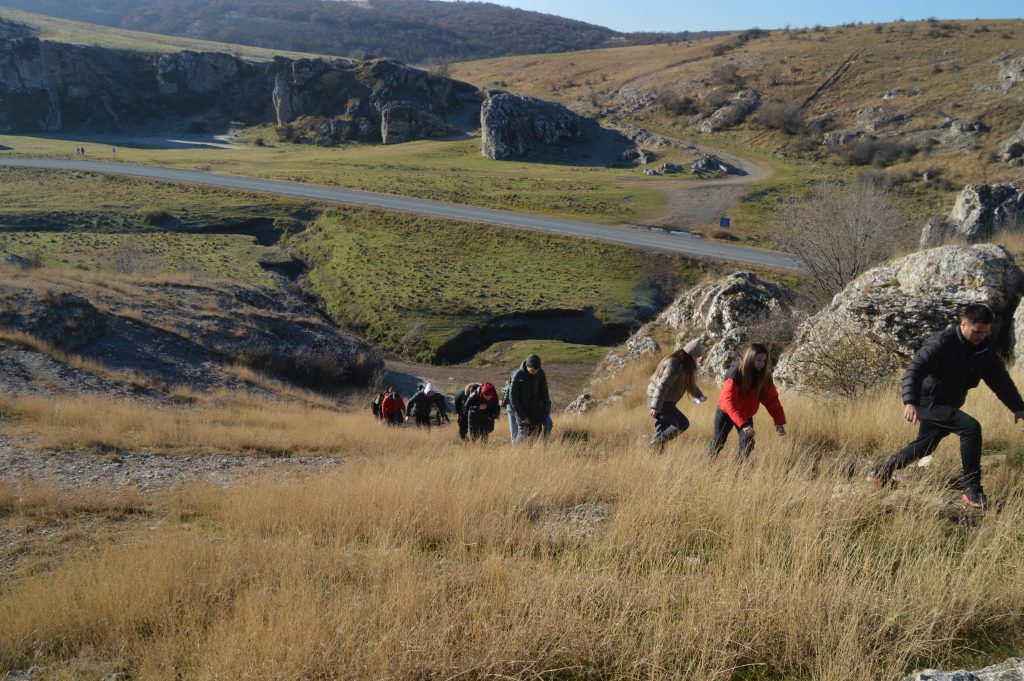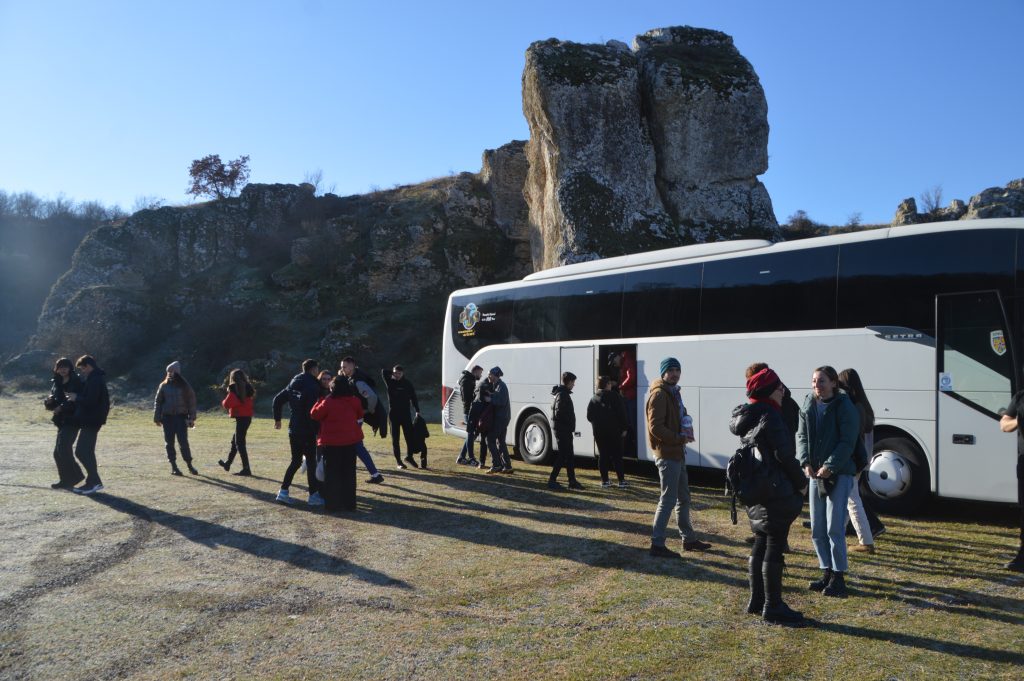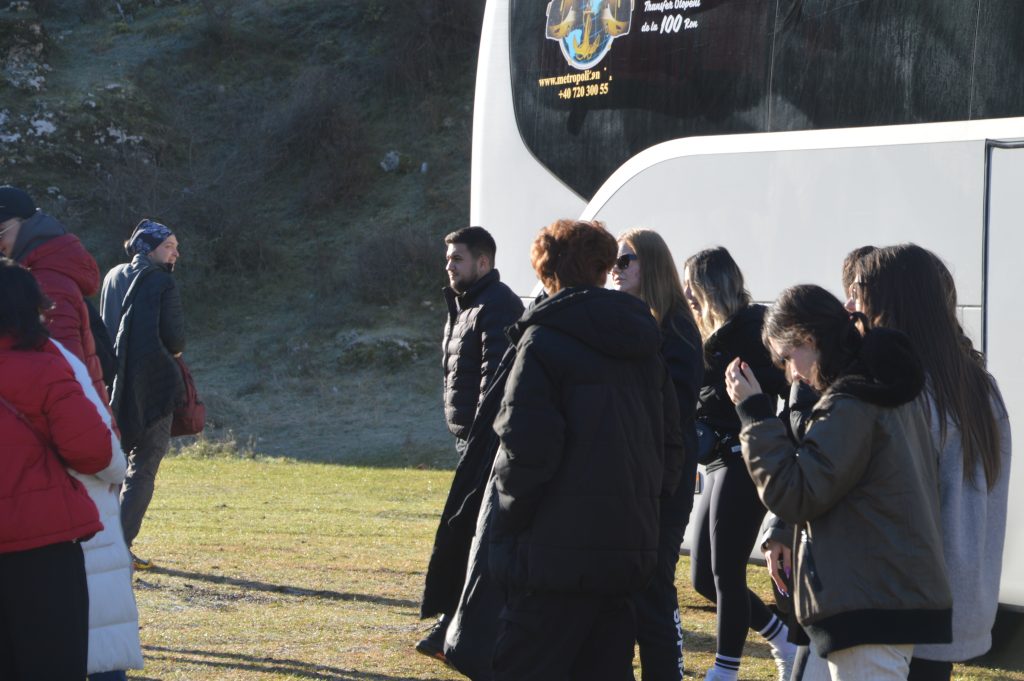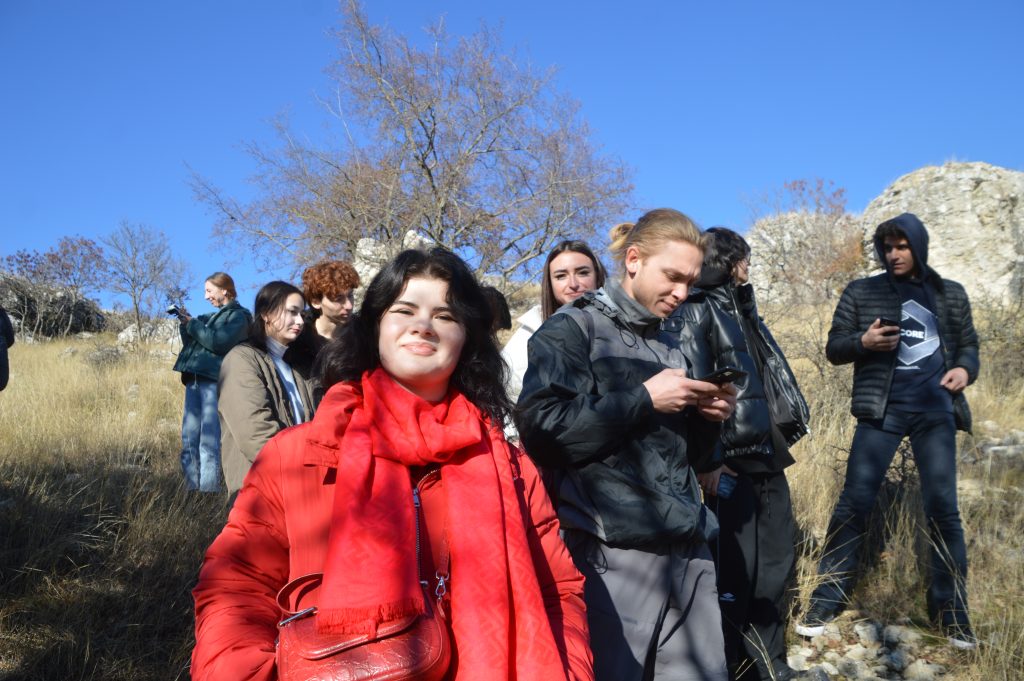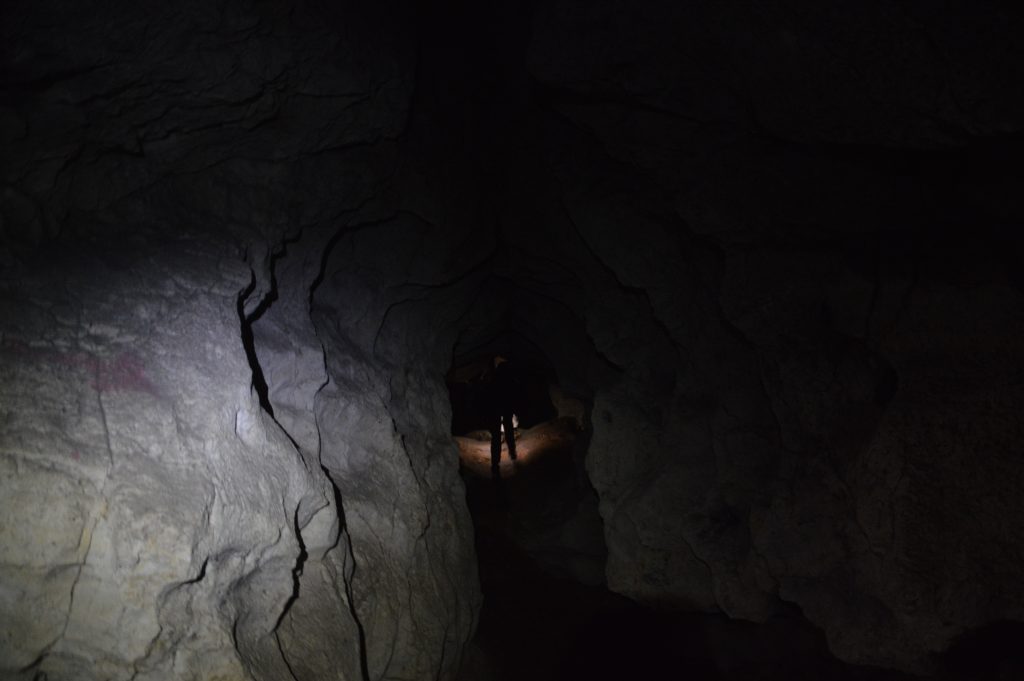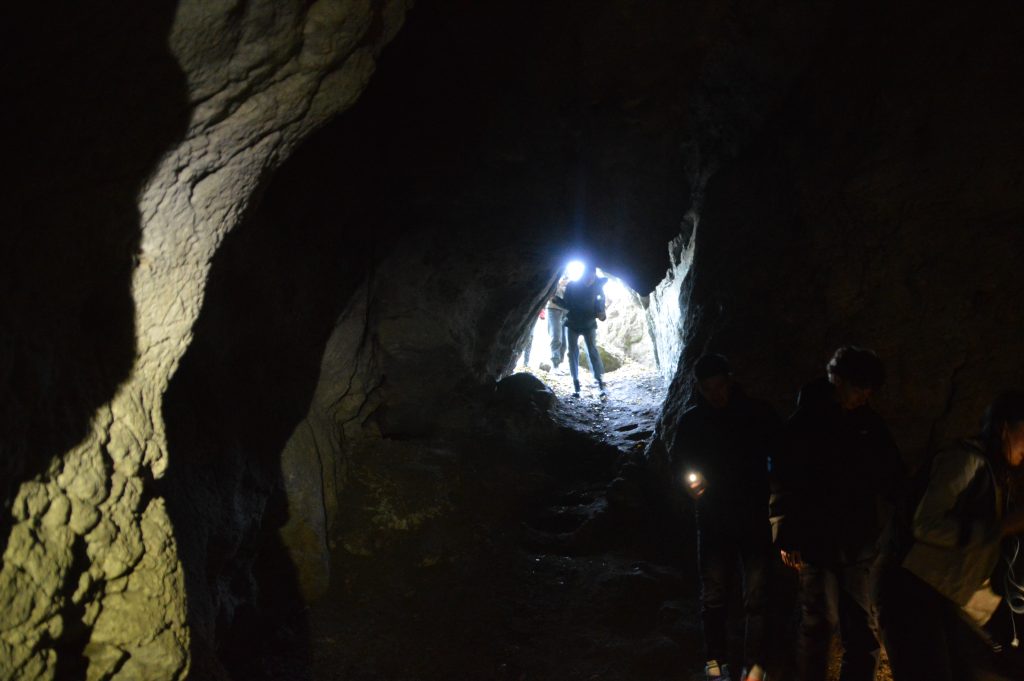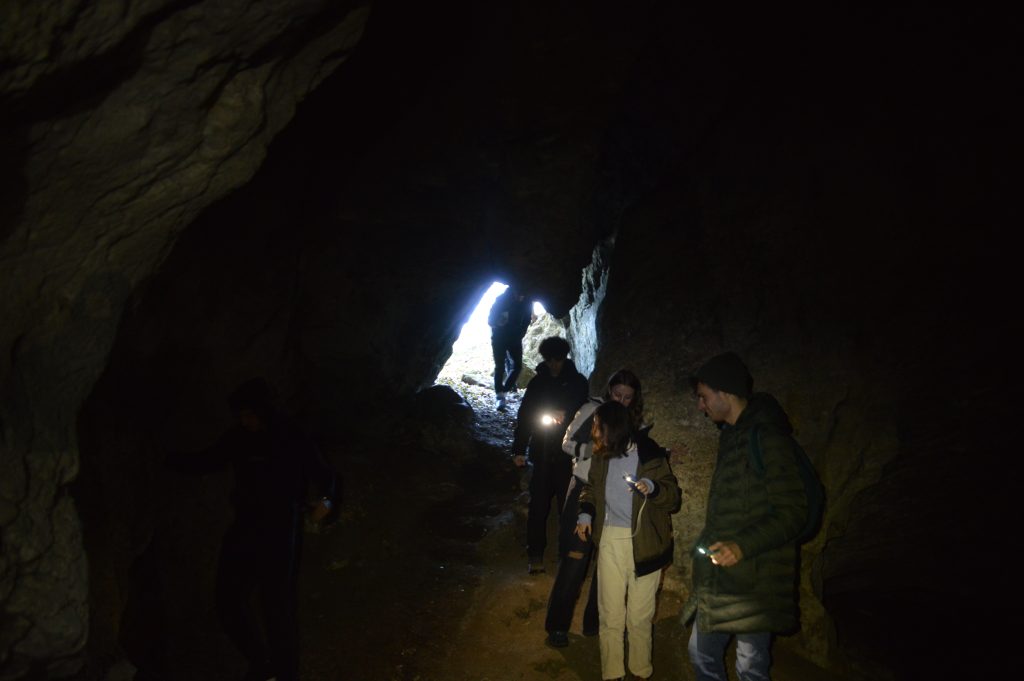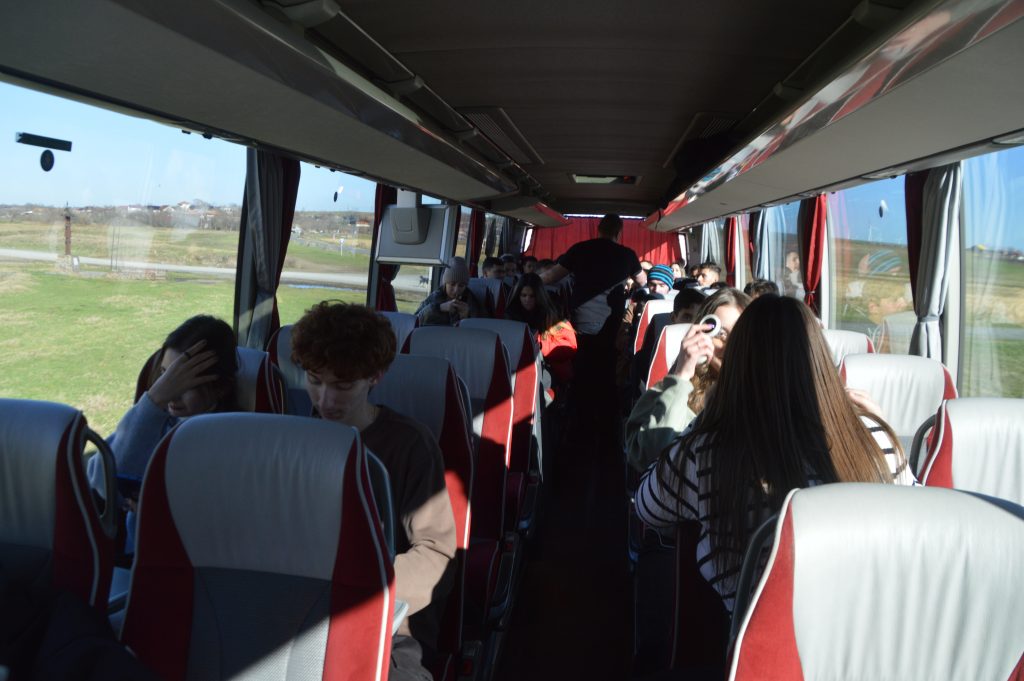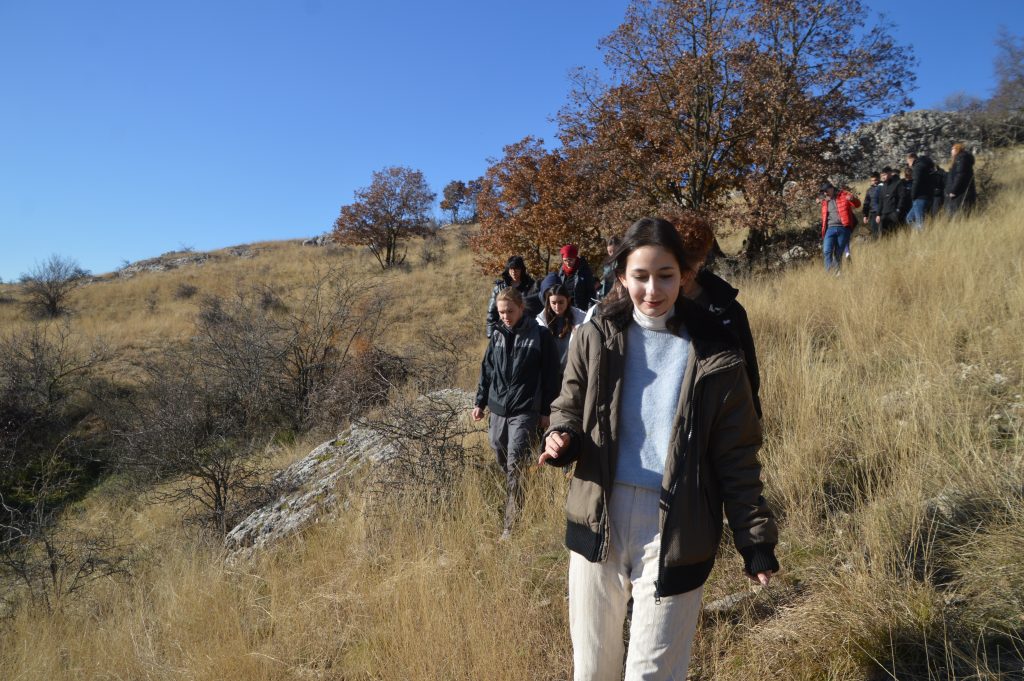The field trip was organized around visits to key locations in the Dobrogea region, each contributing to the workshop’s educational goals:
Cheile Dobrogei and the Jurassic Reef of Cheia
The first stop was Cheile Dobrogei, a region known for its remarkable biodiversity and geological formations, particularly the Jurassic Reef of Cheia. Students explored the natural landscape and identified native plant species, specifically those indicative of the autumn season. The trip was designed to deepen their understanding of the unique ecological characteristics of the area.
Rezervația Naturală Gura Dobrogei
This nature reserve provided an opportunity to analyze diverse soil types and ecosystems. Students utilized digital plant identification applications to document the flora, focusing on rare and protected species. Furthermore, students engaged in 360° photography to capture plants, landscapes, and other elements of the environment in a way that could be later used to create 3D models of the natural heritage sites. These digital models will serve as educational tools, enabling more interactive ways to preserve and study these locations.
Peștera Liliecilor (Bat Cave)
The visit to Peștera Liliecilor was a key moment for discussing the delicate habitats of bat species in the region. This site allowed students to explore the ecological importance of caves and their role in biodiversity conservation. The team also used 360° photography to document the cave’s unique features, with the aim of creating digital 3D models that can help in monitoring and protecting this fragile environment. Discussions centered around the protection of these habitats and the role that digital tools can play in conservation efforts.
